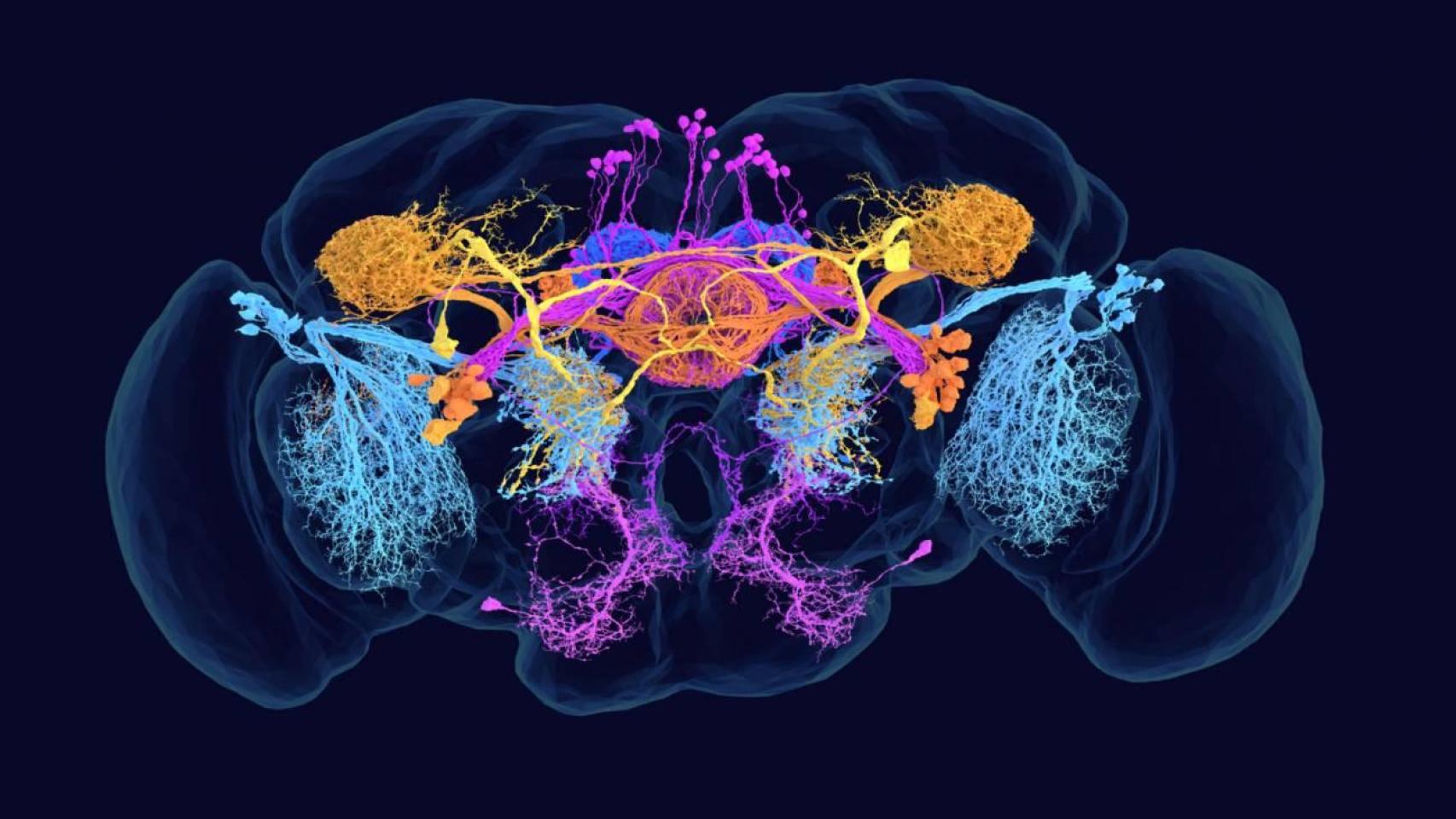Mapping the Mind: The Groundbreaking Connectome of the Fruit Fly Brain
Just over a year ago, two scientific teams from the United States and the United Kingdom made headlines by successfully mapping the entire brain of the fruit fly larva, comprising approximately 3,000 neurons. This monumental achievement was the culmination of a 12-year investigation, later reported in the prestigious journal Science. Prior to this, researchers had successfully mapped the nervous system of the nematode worm C. elegans, which contains a mere 302 neurons. However, the latest breakthrough in neuroscience has taken the field to new heights.
The Adult Fruit Fly Connectome
This week, the journal Nature published a groundbreaking report detailing the complete brain map of an adult fruit fly, Drosophila melanogaster. This specimen boasts an astonishing 139,255 neurons and around 50 million synapses connecting them, making it several orders of magnitude more complex than its larval counterpart. This achievement marks the first wiring diagram—or connectome—of the entire brain of this iconic model organism in biology.
A Global Collaborative Effort
The remarkable accomplishment was made possible through the collaborative efforts of the FlyWire Consortium, an international group of specialists from countries including the UK, US, Australia, France, Germany, Israel, Korea, the Philippines, Poland, Portugal, Puerto Rico, Switzerland, and Taiwan. This diverse team brought together expertise from various fields, showcasing the power of global collaboration in scientific research.
Unraveling Complexity: Neurons and Cell Types
While some research groups focused on mapping the connections between neurons, others identified over 8,400 distinct cell types, including 4,581 previously unknown types. This comprehensive collection of studies sheds light on how connectivity between specific neurons influences behaviors such as communication between brain regions and movement. In total, nine articles were published, each contributing to a deeper understanding of the fruit fly’s neural architecture.
Insights into Evolutionary Biology
Fruit flies share approximately 60% of human DNA, and three out of four human genetic diseases have parallels in these insects. Understanding the intricacies of their brains is a significant step toward unraveling the complexities of larger and more sophisticated species, including humans. As Sebastian Seung, a researcher at Princeton University and co-director of the main research team, explains, “Your brain may seem tiny—it has about a million fewer neurons than the human organ—but a fruit fly can see, smell, hear, walk, and fly. They also socialize, navigate, and learn from experience.”
The Importance of Connectomes
Over the past decade, revolutionary advances have been made in our understanding of the fly brain, and the connectome is fundamental to this progress. Although the map is reconstructed from the brain of a deceased specimen, it provides invaluable insights into the functioning of a living brain. Philip Shiu, a researcher at the University of California at Berkeley, emphasizes the significance of the connectome, stating, “It was not clear to what extent the connectome would allow us to predict neuronal activity, but we discovered that it truly allows us to predict and understand how the brain functions.”
Constructing the Connectome
The intricate map was constructed from an astounding 21 million images extracted from a female Drosophila melanogaster brain. Given the differences in neuronal structure between male and female flies, researchers plan to characterize a male brain in the future. The use of artificial intelligence (AI) played a crucial role in this endeavor, transforming the raw images into a labeled 3D map. Seung notes, “We couldn’t have achieved this without automating the analysis. However, human intelligence was also essential, as AI still makes mistakes from time to time.”
Developmental Variations and Brain Disorders
By comparing the new brain diagram with previous, simpler diagrams, researchers discovered that approximately 0.5% of neurons exhibit developmental variations that could lead to poor connections. This finding opens up an important area of research to explore whether these changes are linked to brain disorders. Mala Murthy, director of the Princeton Neuroscience Institute, highlights the significance of this work, stating, “There is no other complete adult animal brain connectome of this complexity.”
Predicting Brain Function
The newly constructed connectome is not just a structural map; it also predicts the function of all connections between neurons. Neurons communicate across synapses in two primary ways: excitatory (promoting the continuation of the electrical signal) and inhibitory (reducing the likelihood of signal transmission). The authors employed AI image scanning technology to predict the nature of each synapse, laying the groundwork for digital simulations of brain function.
Future Research Directions
As the cost and speed of generating connectomes continue to decrease, the number of wiring diagrams for fruit flies and other small animals is expected to surge in the coming years. Shiu envisions a future where researchers can obtain a mouse connectome and, eventually, a human connectome. “We can imagine a world in which we could simulate the brain of a mouse or even that of a human being, gaining fundamental insights into the causes of various mental disorders and the functioning of the brain,” he asserts.
Conclusion: A New Era in Neuroscience
The mapping of the fruit fly’s brain represents a monumental leap forward in neuroscience. By modeling neurons with increasing precision, researchers hope to predict brain function on an impressive scale. As we continue to unravel the complexities of the brain, the insights gained from the fruit fly connectome will undoubtedly pave the way for a deeper understanding of not only insect brains but also the intricate workings of the human brain. The future of neuroscience is bright, and the possibilities for discovery are limitless.
